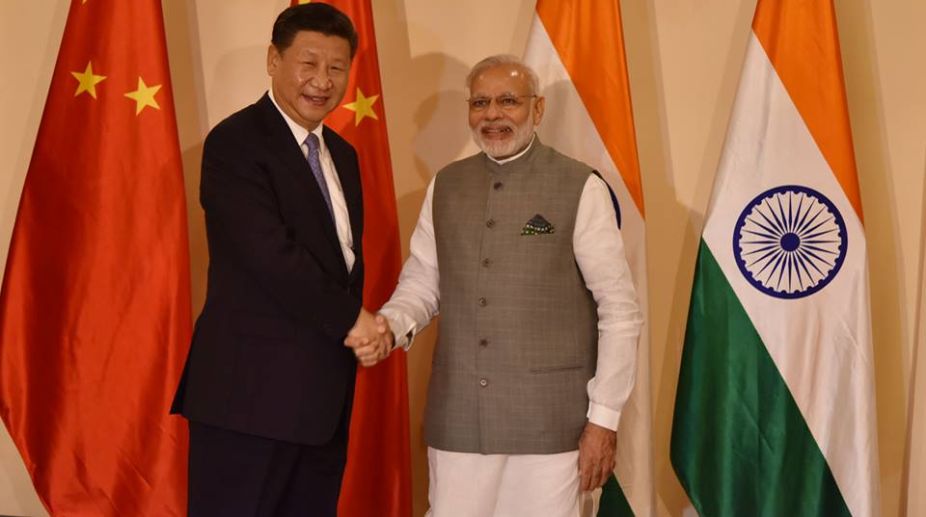When the Narendra Modi Government took the reins three years ago, India’s economic growth was showing signs of volatility.
The government came to power with the promise and ambitious vision of transforming India into a global manufacturing hub.With the government’s emphasis on reforms and removing structural bottlenecks, today India has emerged as a performer in a bleak global framework.
At present, China occupies a dominant place in markets worldwide due to its massive production capacities and vast labour resources. India finds it difficult to marshal the kind of resources that China has at its command.
We note that India’s export competitiveness has been declining since FY14. Looking at internals we see that while India’s exports to China have declined by 40 per cent from FY14 to FY16; India’s imports from China have increased by 20 per cent in this period. In this context, Modi’s foreign policy to ‘act east’ is an important step in the right direction.
A question arises on what the direction that India follows should be. The solution lies in establishment of a sincere relationship of partnership with China, as opposed to competition, which is presently being pursued. In an environment of global volatility and declining world trade, forming mutual synergy between India and China for promoting common interests would be particularly vital.
Outlined are key measures that India must take in order to cement a partnership with China. Currently, China is channelling its efforts in establishment of a new global bipolar era, with China as one of the poles. China’s Belt and Road initiative (BRI) is a network of roads, sea lanes and ports to link China to Africa, Europe and across Asia.
The economic rationale behind the creation of BRI is the creation of Sinocentric global value chains, feeding the mega production capacities which are being created on a regular basis. Much of the Chinese infrastructure that is being built to support BRI has military as well as business use. BRI creates mutual synergies between countries that opt to join the network.
However, if foreign economies support BRI it becomes very hard for such countries to adopt China’s foreign policies. While China commands special attention as India’s partner being its next door neighbour and for its cultural and civilizational interconnections with India, historically we have seen friction and suspicion between the two countries.
At this juncture, India by joining the Belt and Road corridor projects with China will help remove China’s suspicions of India. India and China becoming strategic partners will be the beginning of a shift of world power towards the east. Further, China’s acceptance of India in the BRI corridor will initiate the formation of a strategy alliance with India.
This strategy alliance will act as a catalyst to freeze if not solve boundary disputes between India and China, drastically changing India’s defence needs. Additionally, since 2014, Japan has become a regular participant in the annual Malabar naval exercise between India and US.
While this has riled China, to a large extent it remains inconsequential for Chinese interests. At present, Japan is growing increasingly wary of China’s assertiveness in East China Sea where Beijing is challenging Japan’s sovereignty over Senkaku (which China terms as Diaoyu) island.
India’s proposal to Singapore that the two countries make specific mention in a joint statement of the international tribunal order in July, dismissing China’s historical rights as claimed by Beijing over almost all of the South China Sea, was shot down by Singapore and termed as undiplomatic. This has further exacerbated tensions between India and China.
India is not a claimant state in the South China Sea and thus should avoid taking sides in territorial disputes of China with other countries. India’s support of China’s interests globally would also help remove suspicions.
Additionally, India should not entertain the US request of joining quadrilateral security dialogue with Japan and Australia, as China perceives this as against its geographical interests. Partnership with China is not only the solution to protect India’s territorial concerns, but may lead to quid pro quo; with India seeking China’s support for NSG and UN seat, while India supports China in its claim of its historical rights over South China Sea.
Further, Russia has already shifted its priorities towards developing a special diplomatic relationship with China. India’s strategic alliance with China at this stage would also have a soothing effect on the relationship between India and Russia. Strengthening of ties between India and China would be viewed by Russia as the beginning of a distance between India and US relations.
This would mark the fulcrum of a shifting of the world’s centre of gravity eastwards. Furthermore, it is particularly worrisome that the closer Russia gets to China, indirectly the closer it can be expected to get to Pakistan. Currently, it is being perceived in Moscow as a diplomatic necessity to come close to Pakistan in order to come close to China; particularly when Russia’s traditional ally India is shifting towards the US.
A Russia-China-Pakistan nexus is slowly evolving, which is not a healthy diplomatic development from India’s perspective. The closer India moves to China, Pakistan loses relevance in the geopolitical equation in the region.
India has much more to offer to China than Pakistan, including the BRI corridor. China has committed a $41bn dollar investment in Pakistan for BRI corridor; this could be shifted to India, rather than being channelled into Pakistan.
Only a leader of Narendra Modi’s stature can make a complete U-turn in India’s foreign policy towards China.
If India enters a strategic partnership with China, this will shift the world power centre towards the east. This geopolitical shift in the region will pave the way for bipolar blocs of US and Europe on one side; and India, China and Russia on the other.
The writer is a distinguished scientist and can be reached at jpglobalconsultinggroup@gmail.com.










